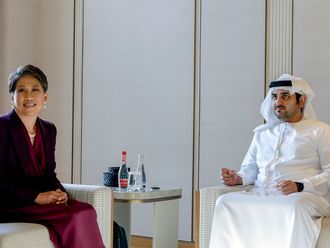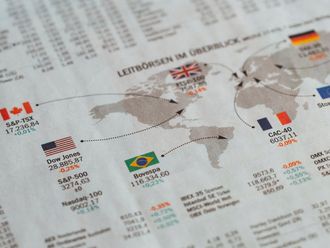Dubai: In recent months Bahrain’s capital outflows have compounded the balance of payments (BoP) woes at a time when amortisation of long-term debt was picking-up.
“We estimate gross external financing needs of $2-3.3 billion annually over 2018-2020. However, the financing gap itself would be about $5 billion [18.3 billion] per annum over 2018-2020 in the event of compromised market access. This would be taking into consideration financial account flows, assuming the financial account flows remain as large as those implied by January-April 2018 forex reserves data,” Jean-Michel Saliba, Mena Economist of Bank of America Merrill Lynch.
According to BofA Merrill Lynch, BoP data for 2017 suggests there was a $3 billion outflow from other investment (assets). This most likely represents corporates acquiring foreign assets as retail banks have been witnessing declining net foreign assets. Monetary data also shows higher dollarisation of non-government deposits and sharp decline in non-government deposit growth was meagre at just 1.4 per cent year on year, compared to 6.9 per cent in November 2014.
“At the current pace of capital outflows, we estimate Bahrain’s Fx reserves would be fully depleted by September. We estimate the Fx reserves burn pace over January-April 2018 to be $0.4bn per month, an acceleration versus previous years,” said Saliba.
Market access
Large financing needs, according to rating agency Moody’s is eroding financial buffers and the lack of details about a potential GCC backstop have contributed to impaired market access.
“Bahrain’s ability to issue external debt ran into difficulties already earlier this year. Slow progress on fiscal reforms, including delayed implementation of the value added tax, and ambiguity regarding the likelihood of support by fellow GCC countries beyond the pledged funds for infrastructure projects, has contributed to lower investor demand for Bahraini government bonds. As a result, the government abandoned plans to issue both a conventional bond and a long-dated sukuk in late March, instead issued a $1 billion sukuk at shorter maturity,” Moody’s said in a report
“This week’s spike in Bahrain’s CDS [credit default swaps or cost of insuring debts against default] spreads to above 600 basis shows that unless there is further clarity on GCC support and or new credible and significant fiscal measures are announced, Bahrain will remain largely cut off from international capital markets,” said Alexander Perjessy, an analyst at Moody’s .
Development projects
In addition to new financial support, analysts expect GCC assistance will continue to include disbursements toward the financing of development projects that the GCC committed in the past, although disbursements have so far been slow.
The higher-rated GCC countries have shown willingness to support Bahrain as early as 2012, when they committed to provide $10 billion in funding (spread out over five years) for Bahrain’s infrastructure, housing and other development initiatives. Of this amount, $7.3 billion has been allocated so far by Saudi Arabia, Kuwait and the UAE to individual projects.
“Additional new financial commitment from the GCC would provide effective support to the sovereign’s credit profile if it is large, given
the government’s financing needs over the next 12-18 months,” said Perjessy, an analyst at Moody’s.
The large widening in the current account deficit coupled with financial outflows has taken a toll on forex reserves and dented domestic confidence. Economists said a credible new support package would support the fiscal sustainability and the pegged exchange rate regime.












